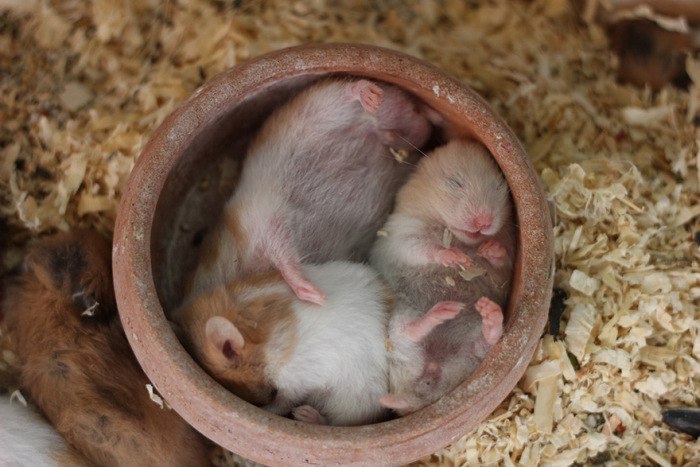|
|
Cute Hamsters
|
Behavior
Golden Hamsters (Mesocricetus auratus) are generally solitary and may fight to the death if put together. Some dwarf hamster species may get along with others of the same species. Siberian hamsters form close, monogamous bonds with their mates. If separated, they may become very depressed. This happens especially in males. Males will become inactive, eat more, and even show some behavioural changes similar to some types of depression in humans. This can even cause obesity in the hamster.
Hamsters are primarily considered crepuscular because they live underground during most of the day, only leaving their burrows about an hour before sundown and then returning when it gets dark. At one point they were considered nocturnal because they are active all night. Some species have been observed to be more nocturnal than others. All hamsters are excellent diggers, constructing burrows with one or more entrances and with galleries that are connected to chambers for nesting, food storage, and other activities. They will also appropriate tunnels made by other mammals; the Djungarian Hamster (Phodopus sungorus), for instance, uses paths and burrows of the pika. Although hamsters do not hibernate per se, they do “close down” a number of systems, such as breathing and heartbeat rate, for short periods of time. These periods of torpor can last up to seven to ten days. Hamsters are known to stockpile large amounts of food where they sleep, making it possible to leave pet hamsters alone for a few days without food.
|
|









